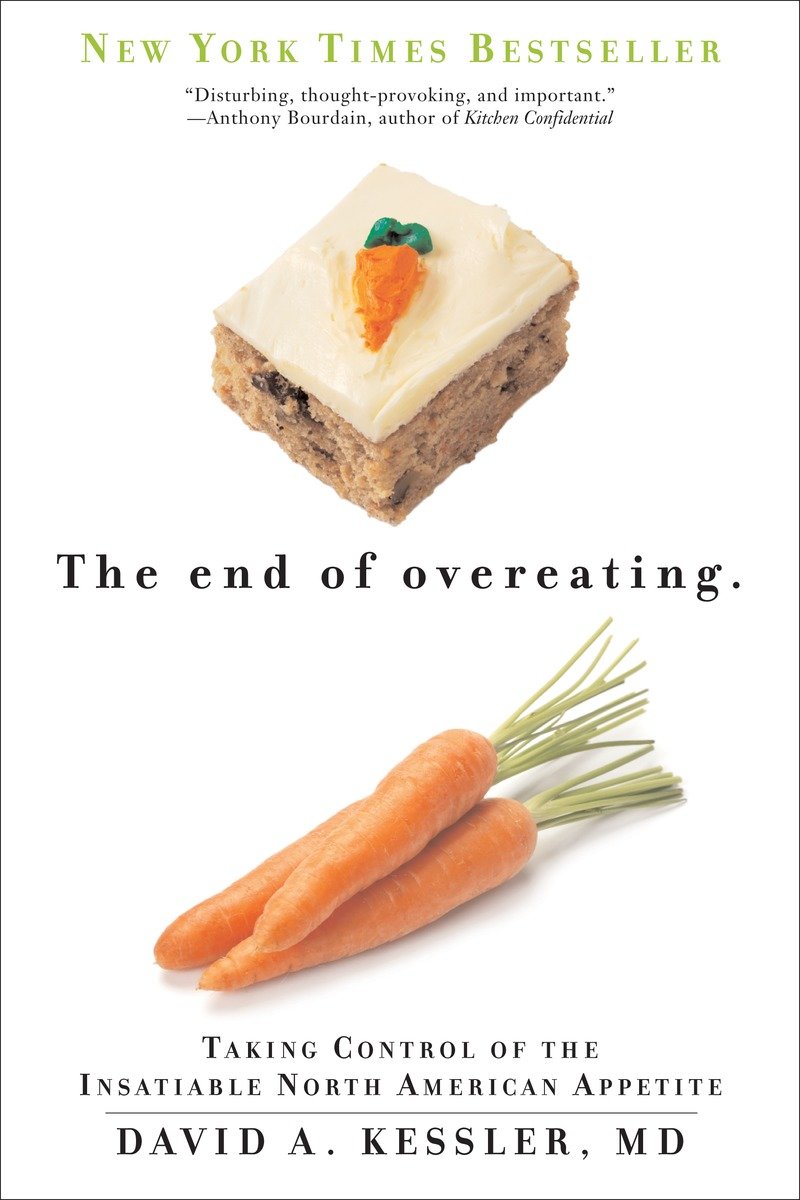The End of Overeating: Taking Control of the Insatiable North American Appetite
| by |
|---|
21.00 JOD
Please allow 2 – 5 weeks for delivery of this item
Description
With engineers working around the clock to figure out how to add “irresistibility” and “whoosh” to food, and the ever-expanding choices (and portions) available to us, it’s no wonder we’ve become a culture on caloric overload. But with obesity rising at alarming rates, we’re in desperate need of dietary intervention.In The End of Overeating, Dr. David A. Kessler, former Commissioner of the U.S. Food and Drug Administration, takes an in-depth look at the ways in which we have been conditioned to overeat. Dr. Kessler presents a combination of fascinating anecdotes and newsworthy research—including interviews with physicians, psychologists, and neurologists—to understand how we became a culture addicted to the over-consumption of unhealthy foods. He also provides a controversial view inside the food industry, from popular processed food manufacturers to advertisers, chain restaurants, and fast food franchises. Kessler deconstructs the endless cycle of craving and consumption that the industry has created, and breaks down how our minds and bodies join in the conspiracy to make it all work. He concludes by offering us a common sense prescription for change, both in our selves and in our culture.
Additional information
| Weight | 0.39 kg |
|---|---|
| Dimensions | 2.41 × 15.21 × 4.09 cm |
| by | |
| Format | Paperback |
| Language | |
| Pages | 352 |
| Publisher | |
| Year Published | 2010-5-4 |
| Imprint | |
| Publication City/Country | Canada |
| ISBN 10 | 0771095562 |
| About The Author | DAVID A. KESSLER, M.D., served as Commissioner of the U.S. Food and Drug Administration under Presidents George H.W. Bush and Bill Clinton. Dr. Kessler, a pediatrician, has been the dean of the medical schools at Yale and the University of California, San Francisco. He co-chaired President Biden's COVID-19 Advisory Board and was head of Operation Warp Speed, the government program to develop and promote COVID-19 vaccines and other treatments. A graduate of Amherst College, the University of Chicago Law School, and Harvard Medical School, Dr. Kessler is the father of two grown children and lives with his wife in California. |
"A fascinating account of the science of human appetite, as well as its exploitation by the food industry." —Michael Pollan, author of In Defense of Food"A gentle though urgent plea for reform, Kessler's book provides a simple 'food rehab' program to fight back against the industry's relentless quest for profits while an entire country of people gain weight and get sick." —Publishers Weekly"Fascinating. . . . Less an exposé about the food industry and more an exploration of us." —National Post"Read [this book], and you'll begin to rethink your approach to food and eating." —Globe and Mail |
|
| Excerpt From Book | Can Canada Put on the Brakes?I walked into Jack Astor’s Bar & Grill in Toronto, an energetic place that draws a young crowd and entertains them with loud music and multiple television monitors. A sign advertised a restaurant gift card: “a gift for every craving.”The dinner menu descriptions had an over-the-top quality that reminded me of Chili’s, including ultimate nachos, with their “bubbling blend of cheeses,” and a bacon cheeseburger.I ordered two items from the “start-up” list. The lobster and crab dip was a warm, fatty blend dominated by cream cheese. The Southwest grilled chicken flatbread, with its four-cheese blend and smoky chipotle aioli, was a dish of fat on fat on refined carbohydrates, accompanied by a little protein. There were two flatbreads to an order, each about 10.5 inches long.My entrée, crispy honey sesame chicken, consisted of fried chicken balls with a substantial portion of vegetables, covered in a sweet sauce. Fat, sugar, and salt had been layered and loaded onto the dish.But for all that, the food at Jack Astor’s stopped somewhat short of its American counterparts. The preparations had less of an industrial quality. The dishes were cooked to order on site, not par-fried, frozen, and shipped across the country. There weren’t as many fried chicken balls on my dinner plate, and they weren’t as large.I saw that kind of contrast everywhere I looked in Canada. Swiss Chalet offered an all-you-can-eat lunch, a garlic cheese loaf “smothered in melted Jack and cheddar,” and a waiter who assured me that “everything comes with dipping sauce.” But portion sizes were a trifle smaller than is typical in the United States and there was a homemade quality to most of the food. At Caroline’s Cheesecake, there were fewer choices than at the Cheesecake Factory, but the portions seemed about as big. The Pickle Barrel had a lot of healthy-sounding food on its menu, but it also served a “triple threat chocolate sundae,” a “mammoth Oreo cookie sundae,” and lemon cranberry and apple cinnamon muffins that were the size of grapefruits.Canada, it seems, is headed in a troubling direction as the ingredients of conditioned hypereating are assembled. Things aren’t as bad here as they are in the United States, but they aren’t good. One out of four Canadians is now obese, compared to one in three in the U.S. One-third of Canadians who were classified as normal weight a decade ago are now overweight. The upward curve is especially evident in the younger population, with the number of overweight and obese children, ages 7 to 13, increasing by as much as 300% in just two decades.Human physiology and conditioning are, of course, the same in both countries, so social norms and the environment offer the only possibilities of arresting these trends. It is as if a great natural experiment is being conducted in Canada.An earlier generation of Canadians recalls a time when eating in restaurants was a rare event and snacking in the street was considered crass. One colleague told me how his father used to love visiting U.S. supermarkets because he was awed by how many more varieties of breakfast cereal were available. Even today, despite changing patterns and the growth of chain restaurants across the country, food is still not quite so ubiquitous or indulgent in Canada. The limitations that once disappointed Canadians may yet save them from the consequences its more overindulgent neighbor is facing.Nonetheless, candy cane donuts and sour cream donuts are now available at Tim Horton’s, and the small donut balls known as “Timbits” are one of the store’s especially popular features. Even the upscale restaurant, Milestone’s, serves an array of sweet and fatty dipping sauces with its Cajun popcorn shrimp, seafood mixed grill, and yam fries. And the Quebecois tradition of poutine– French fries covered with cheese curds and brown gravy–has gained traction, with many fast-food restaurants in all of the provinces adding it to their menus. Swiss Chalet gives me the opportunity to “poutinize” my fries for $1.99.Still, Canada has an opportunity to recognize the trajectory it is on and change course. A publishing professional I met there suggested how it might be done when he confessed to his struggle over Kit Kats. A large, tightly disciplined man, he told me that every evening as he heads to the train for his ride home, he breaks into a run to get safely past a news stand that sells those crispy chocolate wafers. Canada, too, must figure out the direction it needs to start running in order to avoid calamity.When I asked the manager of Jack Astor’s about portion sizes, he told me, “They’re bigger than they have to be. But it’s not like Cheesecake Factory.”The question is whether it will stay that way. |
Only logged in customers who have purchased this product may leave a review.
Related products
-
Low stock
14.99 JOD -
On backorder 2-5 Weeks to Arrive
-
On backorder 2-5 Weeks to Arrive
15.00 JOD -
On backorder 2-5 Weeks to Arrive
10.99 JOD






Reviews
There are no reviews yet.